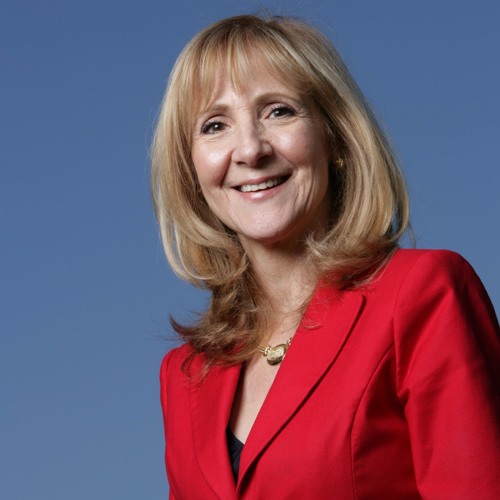
inDEPTH examines topics with perspectives from your colleagues through multiple lenses to illustrate the impact on their practice.
Learn more!
Nearly 2 million cases of COVID-19 had been seen in children aged 5-11 in the United States as of November 2021, about 30% of whom have been hospitalized for the infection. “COVID-19 cases and hospitalizations among young children are increasing across the US, with the burden disproportionately falling on Black and Hispanic children,” says Celia B. Fisher, PhD. “What is unknown is the extent to which these disparities will continue following the FDA’s emergency approval of COVID-19 vaccines for children aged 5-11 in October 2021.” Identifying factors associated with parental pediatric COVID-19 vaccine hesitancy is essential for developing effective public health programs to reduce racial/ethnic health disparities. “However, the CDC does not collect data on the race/ethnicity of children vaccinated against COVID-19,” Dr. Fisher says. “At present, only seven states collect such data, and vaccine uptake across states’ racial/ethnic differences is inconsistent.” Nearly 2 million cases of COVID-19 had been seen in children aged 5-11 in the United States as of November 2021, about 30% of whom have been hospitalized for the infection. “COVID-19 cases and hospitalizations among young children are increasing across the US, with the burden disproportionately falling on Black and Hispanic children,” says Celia B. Fisher, PhD. “What is unknown is the extent to which these disparities will continue following the FDA’s emergency approval of COVID-19 vaccines for children aged 5-11 in October 2021.” Identifying factors associated with parental pediatric COVID-19 vaccine hesitancy is essential for developing effective public health programs to reduce racial/ethnic health disparities. “However, the CDC does not collect data on the race/ethnicity of children vaccinated against COVID-19,” Dr. Fisher says. “At present, only seven states collect such data, and vaccine uptake across states’ racial/ethnic differences is inconsistent.”
“One-Size-Fits-All” Approach Ineffective for COVID-19 Vaccination Messaging
For a study published in Vaccines, Dr. Fisher and colleagues assessed the extent to which racial and ethnic factors predict pediatric COVID-19 parental vaccine hesitancy for school-age children among 400 Hispanic and non-Hispanic Asian, Black, and White parents. “The overarching take-home message from our study was that a ‘one-size fits-all’ approach to public health messaging about COVID-19 vaccination will not be as effective as tailoring messages to the specific needs of parents,” says Dr. Fisher. Parents’ attitudes toward vaccinating their children fell into three categories: 1) those who plan to vaccinate their child, 2) those who remain unsure, and 3) those who are strongly against vaccination. “Overall, only 40% of parents were planning to vaccinate their children,” says Dr. Fisher. “Our data reflected wide differences in parents from different racial/ethnic groups, with 65% of Asian, 45% of Hispanic, 31% of Black, and 25% of White parents planning to vaccinate their child.”
Anti-COVID-19 Vaccination Decisions Influenced by Multiple Factors
Across race/ethnicities, parents strongly against vaccination held more misconceptions about the disease, thought their children were less susceptible, and believed COVID-19 symptoms were relatively mild in young children. These parents were also distrustful of vaccines in general, did not believe the COVID-19 vaccine was safe, and reported lack of support for the vaccine from other parents, family members, clergy, and others in their community. In addition, these parents would be less influenced in their vaccination decision by recommendations from the FDA or their doctor (Figure). “An interesting finding was that parents’ decisions to vaccinate their children depended on how they valued community versus individual rights,” Dr. Fisher says. “Parents who believed getting their child vaccinated for COVID-19 supports the community by stopping spread of the disease were three times more likely to plan to vaccinate their child than those who refused. Conversely, parents who believed vaccinating their child for COVID-19 would violate their family rights were twice as likely to refuse to have their child vaccinated.”
Targeted Public Health Approaches Needed to Address COVID-19 Vaccine Hesitancy
Data from the study suggest that the pandemic has changed the extent to which parents’ decisions on vaccination are influenced by traditional sources of expertise and community support, according to Dr. Fisher. “For example, only 50% of parents in our study who refused to vaccinate their child would be responsive to a school vaccination mandate,” she says. “This suggests national or state-wide school vaccination mandates may be met with strong resistance in certain communities.” General distrust of the FDA and vaccine science and a lack of confidence in physicians were other important factors, says Dr. Fisher. “Most parents provided their children with routine pediatric vaccines, but only 65% said a physician’s recommendation would influence their decision,” she says. “This is the first time the public has had a ringside seat to the process of vaccine development. Thus, COVID-19 vaccine hesitancy may be a consequence of the barrage of conflicting information on vaccine safety and efficacy. Public health communication may increase health science literacy. In future research, we will examine the extent to which parents’ experiences with and attitudes toward vaccinating their children against COVID-19 will raise future barriers to, or facilitate, vaccination decisions for other childhood vaccines and future pandemics.”
inDEPTH Perspectives from Our Contributors
Physician Demographics: Racially Concordant Physicians - Dr. Alex McDonald

Alex McDonald, MD, CAQSM, FAAFP. Family and Sports Medicine Practitioner, Southern California Permanente Medical Group
There is variability in the uptake of the COVID-19 vaccine based on age, geographic location, politics, and demographics; however, race and ethnicity is one of the largest contributing factors. Vulnerable populations, particularly Black and Latinx, have lower vaccine uptake for a myriad of reasons. This article is spot on in discussing that a “one size does not fit all” approach is critical. However, the clinician who is recommending the vaccine may also impact patient and parents’ decisions as noted in Nature. We know that longitudinal relationships between primary care physicians and patients is another critical component to building trust in any medical recommendations. As a family physician, I often have patients and families for whom I have cared for years and built significant trust with. We know that minority patients are often more satisfied and feel more connected and more engaged in healthcare decisions if their doctor speaks the same language and shares the same culture, often resulting in higher quality care. Racially concordant physicians are an important piece when discussing sensitive topics, such as vaccines; As a White male physician, I often try my best when discussing these topics with minority patients, but I know I am perhaps not as effective. Nonetheless, effective patient-/family-centered communication can be taught to any clinician. Furthermore, I try to address and acknowledge historic wrongs by the medical community that may lead to greater lack of trust. When it comes to public health messaging, the messenger is often as important—if not more important—for minority communities who may have greater hesitance or questions about vaccines. Local religious leaders, permeators, or respected individuals of the community may in fact be the best messengers. Public health departments and healthcare workers must specifically sit down and partner with these leaders before we can truly reach enough of our most vulnerable populations. If we truly want to address health disparities, we must acknowledge our past and diversify our healthcare workforce.
Physician Demographics: Community Leaders & Trust - Dr. Umbereen Nehal

Umbereen S. Nehal, MD, MPH, FAAP. Pediatrician Muslim Community Representative, HHS Faith and Community Partnership Center
As a medical student when the Wakefield paper was published, I did not realize that selecting pediatrics meant a career combating vaccine misinformation. Distrust in doctors seemed unfathomable; to me, a doctor was my Pakistani surgeon great aunt who founded a hospital and cared for both elite families and refugees. Antivaxx appeals to suburbanites who trust the “wellness” industry, while media amplifies alarmist content. Though the pandemic killed ~1 million Americans, disproportionately minorities, the Washington Post ran a narrowly focused health article that doctors’ offices “fat-shame” women by measuring weight. I explained to the reporter that bias is a crosscutting issue that includes Black patients undertreated on pain and fat-phobia. Data are essential to advancing equity. My own late mother was labeled low priority for COVID care in Texas based on her age, ethnicity, chronic illness, and BMI. I was misquoted as I would “not allow” patients to opt out of weights. Authoritarians imposing our will is how doctors and public health are often portrayed. “Anti-establishment advocate” identity, not poor science literacy, drives rejection of public health. Public health does need to regain trust before we can act as one “community.” The eugenics movement subjected African-Americans to forcible sterilization. In 2014, public health deans reprimanded the CIA’s misuse of vaccines for espionage. This validated fears that “Western vaccines sterilize Muslims.” Polio eradication stalled as vaccine workers were shot as “spies.” Media also inflames. Recently, “feminist” anthropology professors sought media attention, prior to IRB approval of their “vaccine side effect” online poll, with beliefs that the COVID vaccine disrupted menses/fertility. This fertility fear is shared by evangelicals. Yale researchers describe evangelicals as “immune” to vaccine education. This is perplexing when evangelical doctors, Dr. Birx and Dr. Collins, oversaw COVID vaccine development. Why is Black doctors’ pro-vaccine community outreach more effective in driving vaccine uptake? Whether my Pakistani surgeon great-aunt or “Abuela” in Encanto, communities trust local leaders.
Practice Setting: Private Practice - Dr. Linda Girgis

Linda Girgis, MD. Primary Care Physician, Private Practice, South River, NJ
Since the start of the COVID-19 pandemic, the way we practice medicine has forever changed. While we are continuously changing protocols for how we handle patient flow safely, we still face the practice problems that existed before the pandemic. While many physicians are feeling increasingly burned out, pediatric vaccine hesitancy has caused further burn out rates and higher job dissatisfaction among community physicians, especially pediatricians. In private practice, we are already time crunched in managing medicine while also running a business. COVID-19 has placed increasing burdens on our daily lives in terms of keeping up with the guidelines and trying to answer increased patient fears. Parents have never been afraid of vaccines like they are with COVID-19 vaccines. In the past, it was much easier to address parents’ fears. However, COVID-19 vaccines have become very politicized and the star of the media. People are being bombarded with misinformation, and it is hard for them to know what is true. Addressing vaccine hesitancy is taking a huge amount of time in already stressed practices. As primary care physicians, it is our responsibility to make sure parents are getting the right information, which often involves combatting the wrong beliefs they accepted about vaccines. While they may accept the risk for themselves, they are not so willing to do so for their children. Although it adds to our stress, we must continue to address pediatric vaccine hesitancy, especially regarding COVID-19. If we don’t, the information parents get will likely be the wrong information. In primary care, we know it is always easier to prevent a disease than to treat one. Our pediatric patients deserve our best efforts to get their parents the information that will help them make the right decisions.
Practice Setting: Community vs Individual - Dr. Jasminka Criley

Jasminka Criley, MD, FACP, FHM. CEO and Co-Founder of Indelible Learning. Associate Clinical Professor of Medicine, David Geffen School of Medicine at UCLA
I am principal investigator on an NIH project to improve hand hygiene for children using interactive digital media. I have had many opportunities to discuss vaccine hesitancy from all walks of life. Possible culprits include lack of scientific literacy, trust, or understanding who to trust and pressure from the community. The role of digital misinformation and fear has been huge. Vaccine hesitancy highlights the limits of our present approach to healthcare, in which effective therapy is widely available but human behavior stymies widespread adoption. This role of parents in determining whether to vaccinate their children against COVID-19 is a thorny ethical problem. At conflict are the collective duty we all have to community safety versus individual autonomy: A parent’s right to determine what medical treatment should be administered to a child can conflict with what clinical trial results indicate. Behavior change is not trivial. Messaging is maybe less important than conversing. When educating, it is important to understand where people are coming from and meet them at their level. This means, providing information in the language that makes sense to them, giving time to process it, and respecting their decisions; these are big decisions. Far too often, patients are faced with difficult decisions and confronted with health issues they did not know they had, using confusing terms to those without healthcare background. For preventive medicine, this should not be the case. Patients should have the time to be informed. We should take the time to rebuild the trust that has been eroded. As a society, we need to invest this time, to increase scientific and health literacy from an early age. If we encourage critical thinking, and we build mutual trust, patients will be able to make better decisions to support individual health. As a result, we will all, as a society, benefit.



 PWeekly
PWeekly